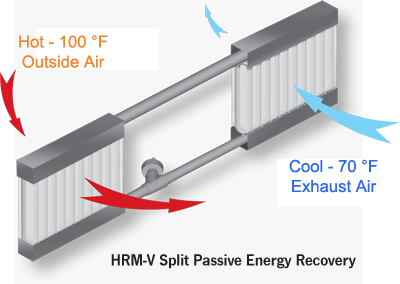College Finds More Than Just Savings with Unique Energy Recovery Technology
The Problem
When a college in Maryland began planning for its new Science Center, they not only placed an emphasis on optimized energy savings, but also needed to keep an eye on first costs. Energy recovery was a no-brainer, but since the air handling units were serving laboratories in addition to classrooms and offices, cross-contamination of the airstreams was a concern. Then when the Architect wanted to look at placing the air handling units on the roof instead of in a mechanical room as a cost savings measure, their real challenge to design an effective heat recovery system within those parameters began.

The Solution
HPT’s HRM-V™ Split Passive Heat Pipes have the unique ability to transfer heat between non-adjacent airstreams without the need for a pump. And because the airstreams are separated, cross-contamination is impossible. They opted for two HRM-V™ systems that will add nearly 2 million BTU’s per hour to over 65,000 CFM of outside air at peak winter conditions while removing over 70 tons of cooling load from over 94,000 CFM of outside air at peak summer conditions.
Use HPT SelectPlus™ to design with this product. Log on to www.heatpipeselect.com.

The Results
Because the Split Passive Heat Pipe provides energy recovery without having to bring the outside and exhaust airstreams together, the entire system could easily fit within a penthouse on the roof. And because it’s a passive device, the only energy added back to the system came from the additional fan power needed to overcome the static pressure loss associated with the heat pipe; but as Kevin McCormick, lead project engineer for Stantec, states, “the flexibility in sizing by simply adjusting fin height and fin length allowed us to add bypass dampers in the same overall amount of space a wheel would have taken, eliminating that slight energy loss when the system goes into economizer mode. And using a device with no moving parts allowed the heat recovery system to be almost maintenance free.” At the end of the day, they have two heat pipe systems providing over $70,000 in estimated annual savings, offering a quick return on their investment!



